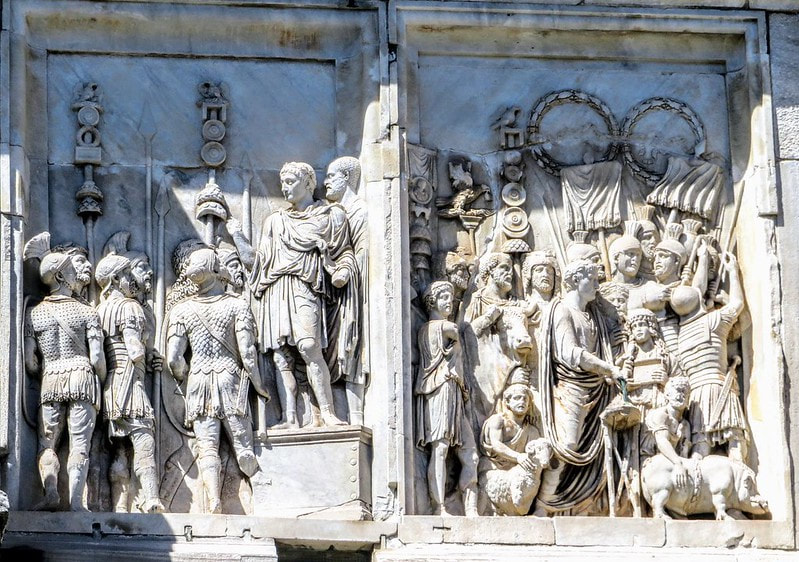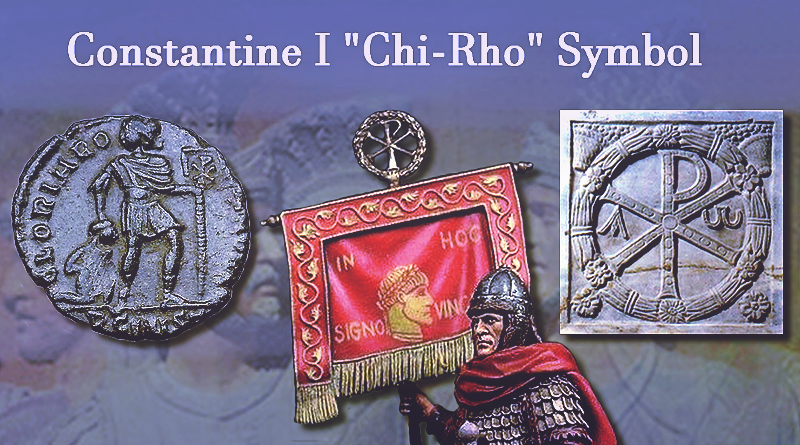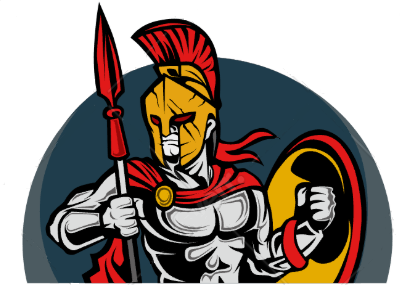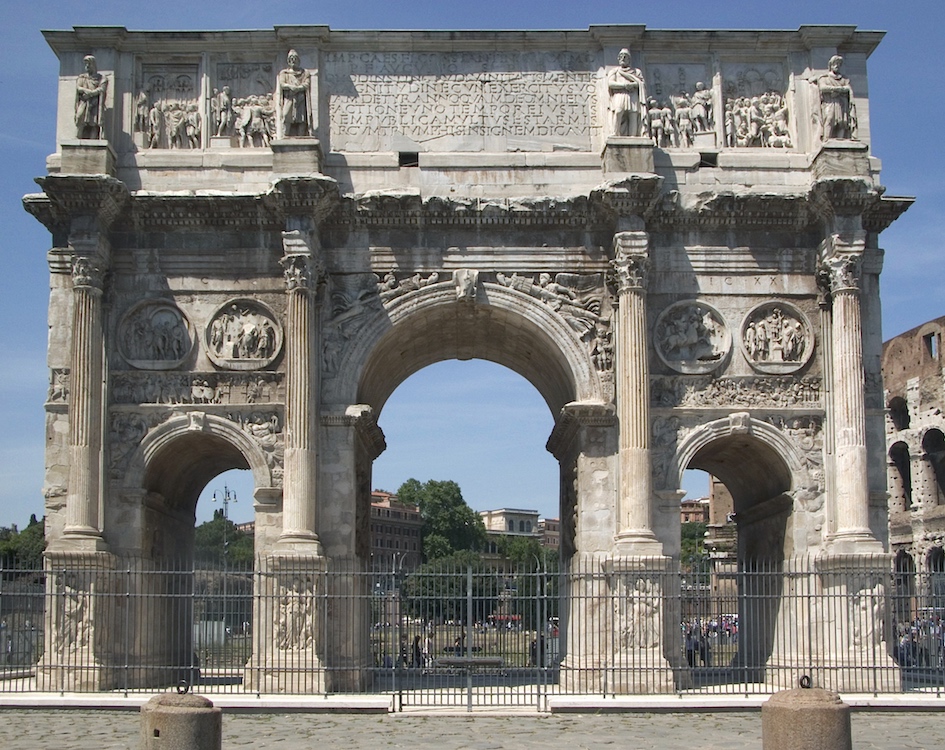The Arch of Constantine is a triumphal arch constructed near the Colosseum in Rome, under the orders of Emperor Constantine I. The construction of the Arch of Constantine honored Constantine’s triumph against Maxentius in the Battle of the Milvian Bridge (312 CE). Standing at about 21 meters tall, this triumphal arch represents one of the largest surviving Roman arches from antiquity. The construction of the Arch of Constantine included newly sculpted elements and spolia, (which consisted of reliefs and statues taken from older monuments dedicated to Trajan, Hadrian, and Marcus Aurelius).
Connection to the Decline of Roman Civilization
By the 4th century, Rome was no longer expanding, and it was instead consumed by internal power struggles, particularly during the Crisis of the Third Century. Constantine’s victory over Maxentius was part of a series of civil wars that weakened the empire. The use of spolia in the Arch of Constantine reflects how Rome, facing economic and cultural decline, increasingly relied on the legacy of its past rather than creating new artistic achievements. Additionally, the arch celebrates Constantine’s conversion to Christianity, which marked a major shift away from traditional Roman religious customs that challenged the emperor’s divine status and weakened the polytheistic state structure.


Continuity vs. Change
The arch celebrates Constantine’s victory, similar to those of previous emperors, but it commemorates a civil war victory rather than the conquest of foreign territory. The use of spolia, including sculptures from the Arch of Trajan and the Arch of Hadrian, both honored tradition and helped legitimize Constantine’s rule by linking him to past emperors. This tactic positioned Constantine as the rightful successor to Rome’s greatest leaders, known for their military success and effective governance. The monument signifies the growing influence of Christianity in the empire, as reflected in the phrase “instinctu divinitatis” (“by inspiration of the divine”). The transformation initiated by Constantine ultimately transformed Roman culture, religion, and governance in deep and meaningful ways.
Positive or Negative Changes?
Constantine’s leadership restored stability across the Roman Empire, and the arch commemorating his victory stood as a powerful symbol of renewed strength after years of internal conflict, civil war, and the turmoil of the Crisis of the Third Century and the collapse of the Tetrarchy. This message is reinforced through the arch’s triple structure and rich iconography, which emphasize Constantine’s supreme power. However, the emphasis on personal rule and the growing centralization of power weakened the traditional republican values of the Roman Empire. Despite his implementation of military and economic reforms, the empire persisted in its economic decline. The religious transformation from traditional Roman polytheism to Christianity during Constantine’s rule led to increased divisions due to resulting religious tensions.


Rate of Change
The Arch of Constantine is a monument built to celebrate a military victory and is often associated with the rise of Christianity. However, its visual and symbolic features remain firmly rooted in Rome’s pagan past, reflecting Constantine’s careful navigation between longstanding traditions and emerging faith. The changes represented by the Arch of Constantine unfolded gradually. The transition toward Christianity and the subsequent shift of power to the East, marked by the establishment of Constantinople as the new Christian capital, generated new conflicts and challenges.
A Turning Point in History
The Arch of Constantine celebrates a victory attributed to the Christian God, a turning point in Roman history. Constantine’s conversion and the Edict of Milan (313 CE) marked a major shift in the Roman religious and political identity. Constantine’s rise paved the way for the eventual split of the empire into Eastern and Western halves, and the eventual fall of the Western Roman Empire in 476 CE.


